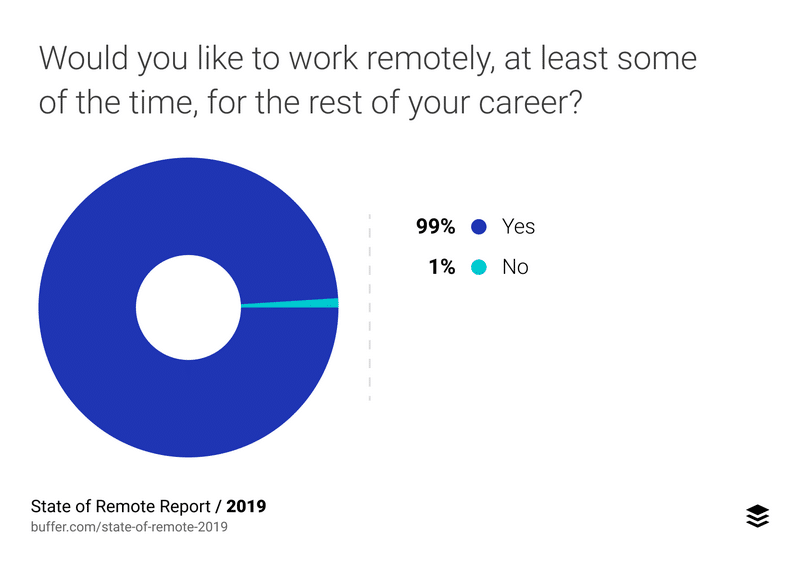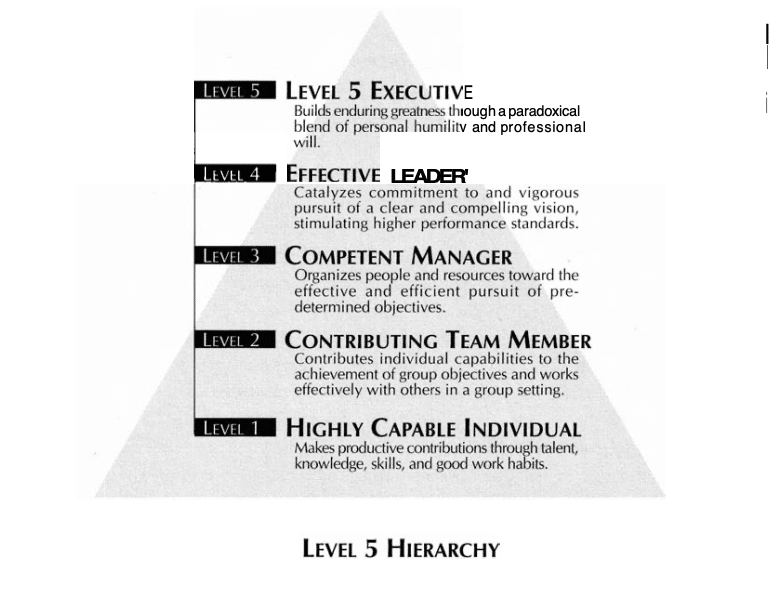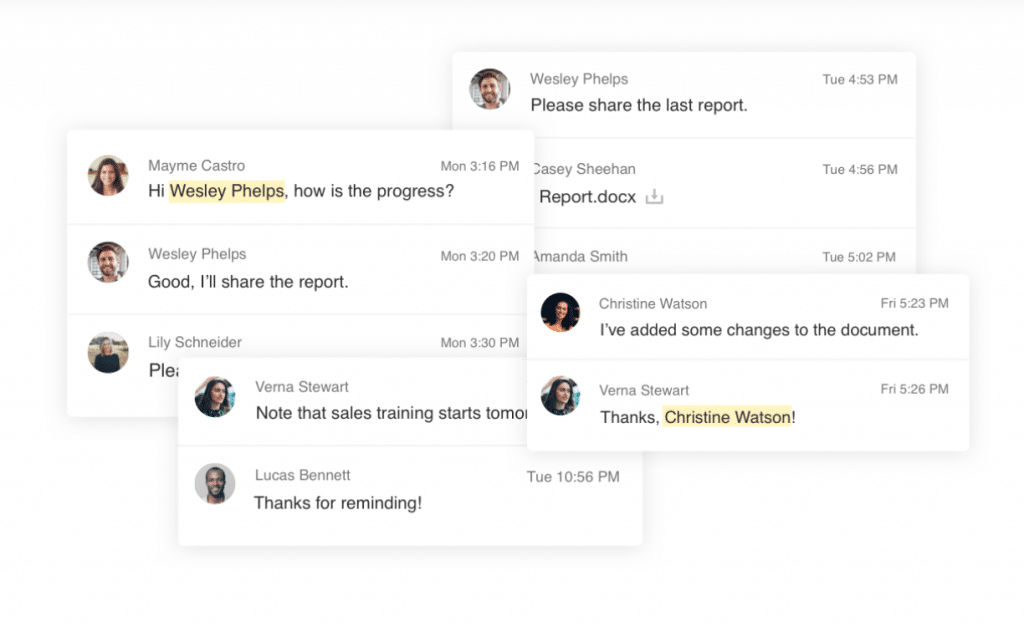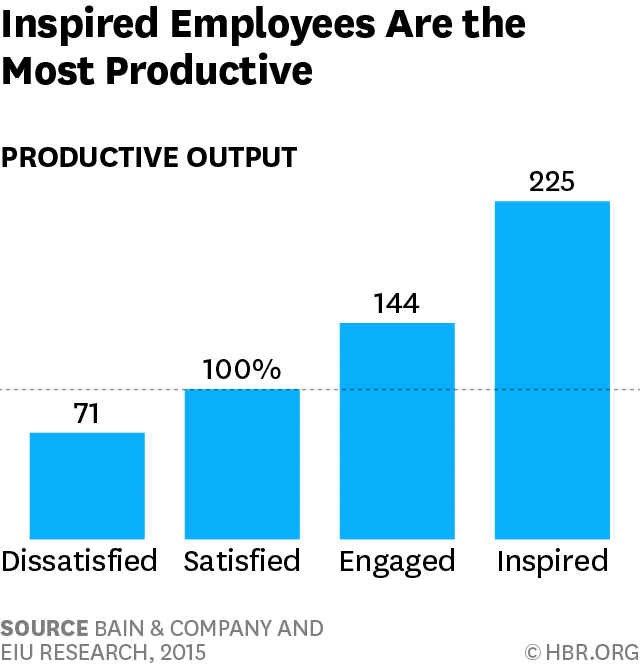Employee engagement is at a dismal low.
Sixteen percent among millennials.
Despite the billions that companies are investing in employee engagement, the old formula of attractive perks and better pay just aren’t working like they used to.
Millennials and Gen Zers, who make up a large chunk of the workforce, don’t respond as well to these motivators. In a worrying trend, this demographic also has among the highest turnover rates.
Amidst all this, the “future of work” appears to be going in a way that many employers aren’t comfortable with yet (but employees love it): remote work.

From buffer.com
In this climate of unprecedented challenges, what is the one thing that businesses can improve right now to adapt?
Their leadership.
Why?
Managers alone account for 70% of the variance in harnessing team engagement. Tomas Chamorro-Premuzic, Chief Talent Scientist at Manpower Group goes so far as to argue that “…incompetent leaders are the main reason for low levels of employee engagement, and the prevalent high levels of passive job seeking and self-employment.”
Might sound harsh, but plenty of studies have gone into great detail to figure out the relationship between leadership and employee engagement. But how can businesses make sense of (and act on) these findings?
In this article, we’ll cover:
- What great leaders do: 5 leadership best practices that improve employee engagement
- What great leaders say to highly engaged teams
- A 3-step employee engagement training plan for leaders
- Actionable tips to leading remote teams
- The next level after employee engagement
✍️ Need help building better employee reviews? ✍️
We made you a template that’s competency based and includes specific criteria for remote team members!
What great leaders do: 5 leadership best practices that improve employee engagement

Source: Good to Great, Jim Collins
Some argue that great leaders are born, not made.
But there are two sides to effective, collaborative leadership. In his book Good to Great, Stanford management scientist Jim Collins describes “Level 5 Leadership” as a combination of personal humility and professional will. Humility is an essential quality.
But professional will—which he defines as an unwavering resolve to do what must be done for the best long-term results, commitment to high standards, and personal responsibility—are qualities that can be developed.
Research and industry wisdom highlights a few best practices that can improve engagement outcomes. These can be applied across all levels of leadership:
1. Listen with positive intent.
Listening with positive intent means that you deliberately assume the best of your colleagues and subordinates. It means that when someone makes a mistake, you hear them out empathetically instead of drawing the knee-jerk conclusion that they are “lazy” or “incompetent.” (Here are a few empathy exercises to try.)
2. Divide work, not responsibility.
When dividing work, provide ample clarity on who is accountable for the quality of the outcome. Not doing so can leave the team uncertain and opens up the possibility of internal politics.

3. Connect more than you correct.
As often as you can, choose connection over correction. Listen with positive intent and “level” with your subordinates, making them feel acknowledged and respected even as you address their mistakes.
4. Set your employees up for success.
Hire the best employees that you can, and then set them up for success. Train them and provide them with all the tools they need to do their best work. Provide them with mentors. Mentorship is a powerful dynamic, cementing mentees’ emotional bonds to the organization.
Here are a few employee engagement apps that’ll keep your team enthusiastic and attentive.
5. Welcome dissent.
Welcoming constructive dissent and debate encourages a culture of transparency and open communication and can prevent large-scale disasters.
Management professor Michael Roberto wrote, “Too often leaders don’t hear bad news until it’s too late, eventually becoming so isolated that even high-risk or illegal actions go unquestioned.”
A 3-step employee engagement training plan for leaders
The role of senior leaders in employee engagement is as much about cultivating a great company culture as it is about making high-level decisions and seeing their business grow to greatness. In stressful times, many leaders tend to buckle and resort to pressure tactics, which are doomed to fail.
Successful leadership is about creating and protecting the conditions under which employees can choose to be engaged. Follow this simple three-step plan to begin building a culture of engagement in your company.
Step 1: Ask.
Keep checking in on your employees to keep tabs on the shape of your company culture. You can do this through regular informal check-ins, qualitative interviews, and employee engagement surveys. Use these tools frequently—and don’t forget to act on the results.
What is an employee engagement survey?
An employee engagement survey is a tool used to check in on your employee’s emotional commitment to your business’s success. There are a few factors known to affect employee engagement, such as lack of communication and employee recognition, and a survey is designed to diagnose and troubleshoot these issues based on these.
Step 2: Create a system to support your action plan.
As a leader, it’s essential that your employees feel that they can approach you whenever they need to voice out their concerns (and who knows, even their appreciation).
Here are some ways you can build up a system:
1. Centralize all internal communications.
Communication is the cornerstone of effective leadership. So, make team knowledge accessible. Streamline all your communication tools into one platform using something like RingCentral to avoid missing an important message when your inbox is being bombarded with email.
2. Be on top of what’s happening in every team.
Good leaders are the key to effective collaboration. And they can do that largely because they know everything that goes on.
One way to do that is with collaboration tools. For example, RingCentral’s task management feature and integrations with project management tools (like Asana) give you an overview of targets and deadlines and track progress and updates so you can proactively address and prevent issues before they pop up.
3. Have a tool for collecting feedback regularly.
Think of your employee engagement strategy as a guitar that you need to keep tuning. As your organization grows and (so do your people), culture evolves too. Make it as easy as possible for your employees to voice their concerns and raise issues.
Provide them the option to be anonymous, or even better, create a culture where they won’t want to be. For example, you could create a new team on RingCentral as a “suggestion box” for new initiatives or just use it as a space to check in:

4. Schedule regular face-time.
Leaders have to take the time out to be present with each and every one of their team members. While this may not always seem possible—hey, you’re busy, we get it—try to make it a point to talk to your team once a week (or once a month at least).
5. Focus on building great teams.
How do you engage leaders in employee engagement? Make sure your managers have the leadership training and tools to lead their teams and discuss strategies with their peers.
Great team culture is like having enough oil for a set of gears. Invest in effective teamwork and creating supportive spaces where individuals can lean in on one another and resolve conflicts maturely.
Step 3: Evaluate your leadership style.
There are some things a survey just can’t get at. Observe your colleagues as you speak with them. How do they respond when you call for a meeting? What are their non-verbal cues? When you correct them, do they take offense? Or do they seem relaxed around you?
Tips for leading remote teams
In 2017, more than 8 million people worked from home. Employees are willing to take up to an 8% pay cut for the flexibility to work from home, but it hasn’t been the right move for all employers.
Whether you like it or not, remote work is here to stay. So, how can you lead remote teams while making sure everyone’s engaged?
Invest in the right technology upfront
Virtual collaboration is critical when it comes to running a successful remote (or hybrid) team. Luckily, there are a lot of options on the market today for cloud collaboration software that can help everyone stay in touch and on the same page… but this can be overwhelming when trying to decide on the best platform for your business.
Our recommendation? Find a unified communication platform that covers all the bases you need and can grow with you. Look for software that wraps your business phone, video conferencing, and team messaging into an easy-to-use app.
If you need a video collaboration software, use RingCentral Video for HD call quality, wherever in the world you are:

Support and make space for different working styles
In the age of remote and hybrid work, people are discovering all kinds of things about the way they work best. This is good news! Don’t be afraid to let your employees work how they feel most productive and confident, and experiment with different collaboration styles.
Now you’ve tried these employee engagement strategies. What’s next?
In the 2016 Korean movie The Admiral: Roaring Currents, Admiral Yi Sun-sin faces a losing naval battle to hold off the invading Japanese army. The day before the battle, a traitor burns his turtle ship, the best-fortified of his lot of 13. His soldiers are weary and grieving and prefer to give up and retreat. But if Korea loses this battle, they lose their country.
Yi Sun-sin doesn’t sit there and raise their wages (he can’t). Or begin a leadership coaching seminar (no time). Instead, he pushes ahead on a lone naval ship, getting on deck with his sword and shield out, battling alongside his soldiers. He gets his skin in the game, which is worth more than anything he could have said to persuade his soldiers to risk their lives.

By doing so, he inspired them and led by example.
Great leaders can get their employees to bend over backward for the business—and they do this by inspiring their employees. A Bain study of 300 CEOs across the world found that it would take two and a quarter satisfied employees to generate the same output as one inspired employee.

If you want to engage your employees, aim to inspire them. Connect your mission and vision to the greater good, and then, get your skin in the game. If you practice what you preach, your employees will jump in right after you.
Originally published Mar 16, 2020, updated Mar 29, 2022





